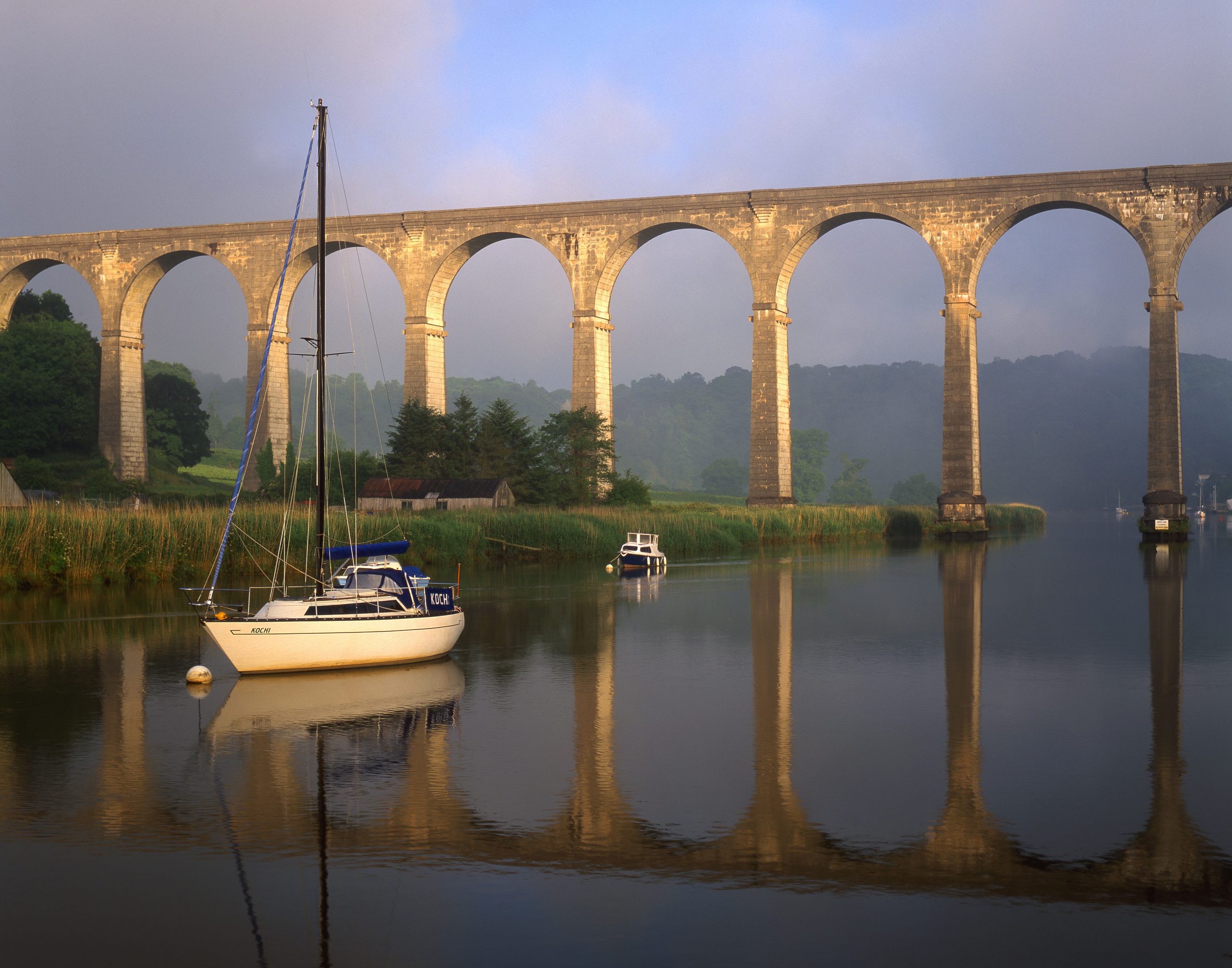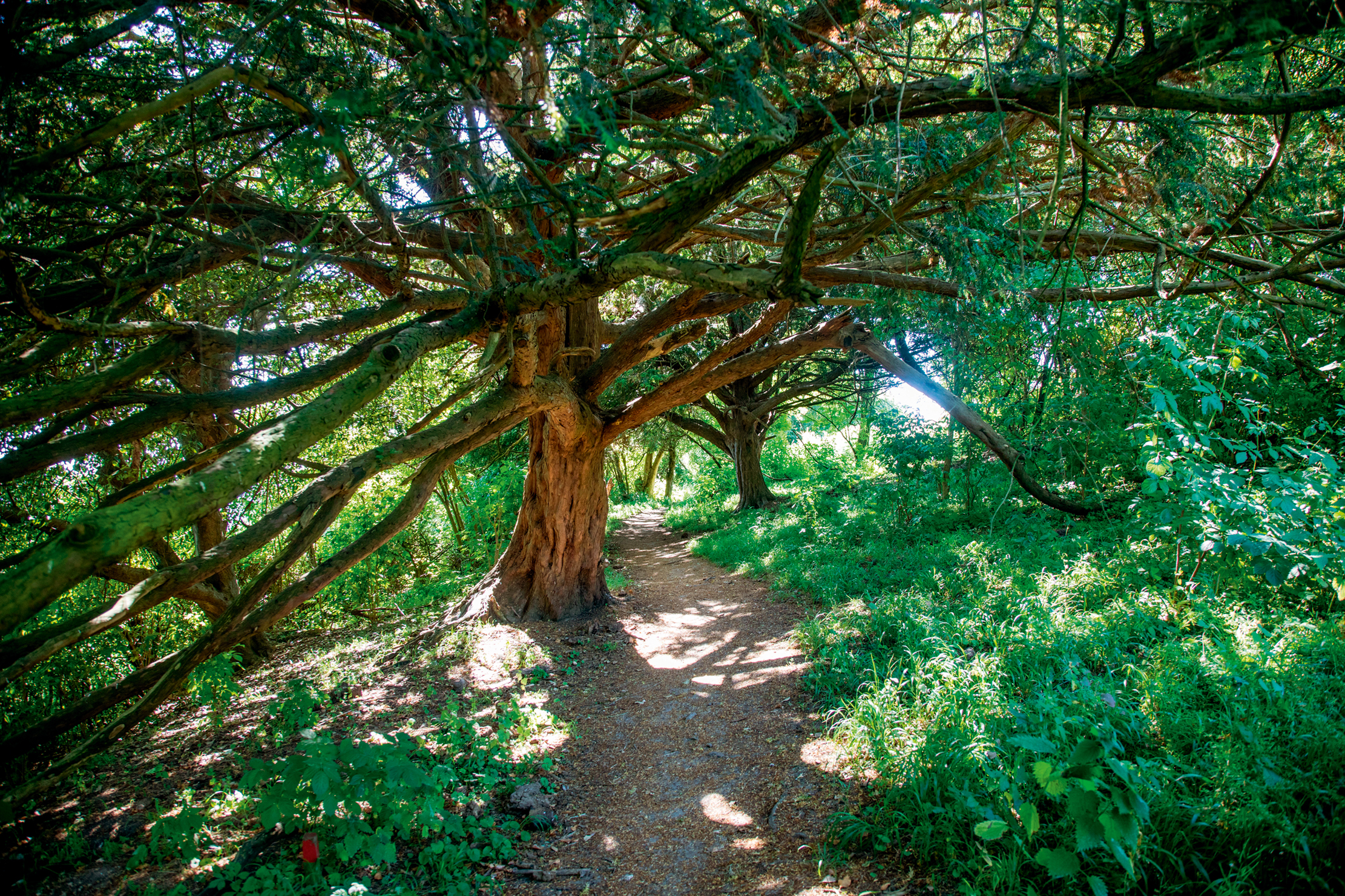The Tamar Valley AONB: Mines, otters and the ghost of a 'black widow' who roams the moors in a carriage of bones
Kate Green focuses on the Tamar Valley AONB.


The Tamar Valley AONB, designated 25 years ago, overlaps with a World Heritage Site mining landscape. In 1844, the Duke of Bedford leased the Devon Great Consols to investors, who turned it into Europe’s richest copper mine, and later a major source of arsenic.
Those days have gone, and Nature is strong here. The Tamar is an otter stronghold that managed to retain them during the population crash in the 1960s and 1970s.
The River Tavy, which rises in the peaty Dartmoor earth, rushes over granite rocks and pours over a 7ft drop into the Devil’s Kitchen pool on its rambunctious, tumbling way to encounter the Tamar.
The Tavy even has its own poet: William Browne. Born about 1590, he wrote yards of praise to the Tavy in his main work, Britannia’s Pastorals, including these lines:
Near Tavy’s voiceful stream (to whom I owe More strains than from my pipe can ever flow). Here have I heard a sweet bird never lin [cease] To chide the river for his clam’rous din.
Browne was born in Tavistock, also the birthplace of Sir Francis Drake, and a place that has quite a history. The Irish regularly raided it up to the 6th century, and there was a bloody battle with the Danes in the 10th; then Henry VIII dissolved the abbey, presenting it to the Earl of Bedford.
Just as famous as the earl in these parts is the 19th-century heiress Lady Howard — she was known as a black widow after three of her husbands perished, and her ghost of is said to ride the moor in a coach made of bones.
Not all the talest of the Tamar are quite so grim. In her 1908 book, Devon: Its Moorlands, Streams and Coasts, the social campaigner Lady Rosalind Northcote, who gives Browne the backhanded compliment of having ‘the happiness of being better appreciated by his contemporaries than by posterity’, describes the eruption of the Tamar into the expanse of Plymouth Sound as: ‘a scene whose triumphant beauty is beyond dispute’.
Exquisite houses, the beauty of Nature, and how to get the most from your life, straight to your inbox.
Another Tamar Valley writer was Anna Eliza Bray, wife of the vicar of Tavistock. Mrs Bray, a prolific historic novelist, penned The Borders of the Tamar and the Tavy (1836), describing the legends of the town in a series of letters to the Poet Laureate, Robert Southey. Her last years were blighted by a bizarre — and unfounded — accusation that she had stolen a piece of the Bayeux Tapestry.

How the Surrey Hills has inspired generations of writers, artists and visionaries
With its magnificent views, lovely churches and grand country houses, this Area of Outstanding Natural Beauty has proven an inspiration

The Kent Downs AONB: One of Mother Nature's works of art, from the famous White Cliffs to the wildlife of the Garden of England
Victoria Marston takes a look at the magnificently beautiful Kent Downs AONB.

Revealed: How much extra you'll pay to live in a National Park or AONB
What price beauty? Annunciata Elwes delves into Knight Frank research to find out.
Kate is the author of 10 books and has worked as an equestrian reporter at four Olympic Games. She has returned to the area of her birth, west Somerset, to be near her favourite place, Exmoor. She lives with her Jack Russell terrier Checkers.
-
 It'd be crazy to buy this 500-year-old farmhouse just because of its utterly gorgeous Aga — so thank goodness that the rest of this place is also really nice
It'd be crazy to buy this 500-year-old farmhouse just because of its utterly gorgeous Aga — so thank goodness that the rest of this place is also really nicePerry Mill Farm is an immaculate yet characterful four-bedroom dream home in the country at a price that will make city dwellers immediately start Googling 'working from Worcestershire'.
-
 What is a boilie and what does it do? Discover this and other useful knowledge in the Country Life Quiz of the Day, December 3, 2025
What is a boilie and what does it do? Discover this and other useful knowledge in the Country Life Quiz of the Day, December 3, 2025Boilies, Stephen King, Scottish rivers, pink houses and some other stuff. Best get your quiz on.
